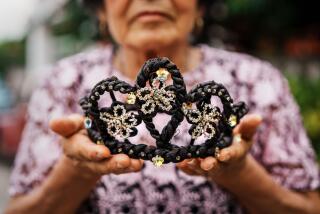Patrick Ricard dies at 67; turned family firm into global liquor giant
In the French Mediterranean port of Marseilles, no game of pétanque — the national sport played with small, heavy, metal balls — would be complete without a glass of Ricard, the celebrated aniseed-flavored drink known as “petit yellow.”
Patrick Ricard, who transformed the little-known drink as quintessentially French as frogs’ legs, garlic and snails into part of a global spirits giant, died Friday, the company announced in a statement. French media said Ricard, 67, died unexpectedly in the south of France after a “cardiac incident.”
Ricard was head of the French conglomerate Pernod-Ricard, the second-largest spirits company in the world. Its success was founded on the popularity of the “pastis” drink beloved by Gallic drinkers but for many years relatively unknown elsewhere.
Born in 1945, Ricard began working at the family company based in Marseilles in 1967 after studying in France, Germany and the United States.
His father, Paul Ricard, developed the liqueur bearing his name in the late 1920s and decided to sell it as a Provencal tradition. He experimented with various mixtures in a laboratory, adding fennel seeds and local Provence herbs, though the exact recipe is a secret.
Paul Ricard sold his concoction as “the real Marseilles pastis” and through clever marketing made its name the most ubiquitous in postwar France; suddenly the country was inundated by the company’s trademark yellow-and-blue Ricard advertising signs, cycling caps, drinking glasses and water jugs, ashtrays and cardboard table mats. The drink was originally marketed as a rival to the older and more established Pernod — with which it later merged — and Ricard sponsored high-profile sporting events, including the Tour de France, and built a motor-racing circuit.
Ricard owed its popularity to the demise of absinthe, the highly alcoholic spirit nicknamed the “Green Fairy” because of its color and claims that it provoked hallucinations, favored by Parisian artists and writers, including Vincent van Gogh, Henri Toulouse-Lautrec and Oscar Wilde in the late 19th and early 20th centuries.
Portrayed as dangerous, absinthe was banned in the United States and much of Europe by 1915. In France, all aniseed-based spirits were outlawed because they were suspected of undermining France’s war effort.
Under Paul Ricard’s youngest son, Patrick, the family firm flourished. Five years after he joined it, Patrick Ricard became chairman and chief executive. Three years later, in 1975, the company merged with its great rival Pernod, and Ricard established his strategy of growth through acquisition.
Realizing that with its strong aniseed taste, the clear drink — served diluted to taste with water, which turns it a pale yellow — was not to everyone’s taste, and faced with the difficulty of persuading non-French to develop a liking for it, Ricard acquired a portfolio of drink companies around the world: Austin Nichols in the U.S., Ramazzotti in Italy, Irish Distillers, Orlando Wyndham in Australia, and later the Canadian beverage giant Seagram and Britain’s Allied Domecq.
After 2000, the group expanded and sold off its soft drinks to concentrate on its celebrated alcohols. To Ricard and Pernod were added Chivas and Ballantine’s whiskey, Martell cognac, Absolut vodka, and the champagnes Mumm and Perrier-Jouet.
In 2003, Patrick Ricard, who listed his hobbies as hunting and opera, was named Person of the Year by the French-American Chamber of Commerce in New York. He was named European Businessman of the Year by Fortune magazine in 2006 and a year later was given France’s highest distinction, the Legion of Honor.
Ricard, who resigned his position as chief executive in 2008 but remained chairman, is survived by his wife and three children.
Willsher is a special correspondent.
More to Read
Start your day right
Sign up for Essential California for the L.A. Times biggest news, features and recommendations in your inbox six days a week.
You may occasionally receive promotional content from the Los Angeles Times.






